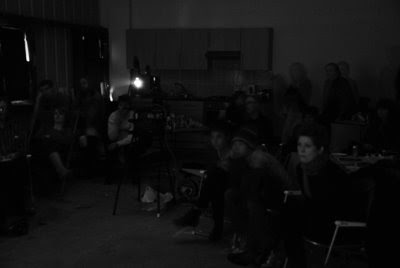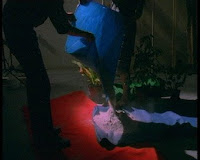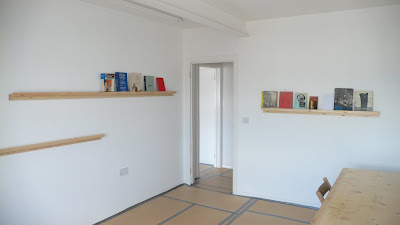


This is a noticeboard and discussion space for the project "What do artists do?" Please see introduction for more about the project.


“…octagonal with a peaked roof, each face filled with a spacious window…perched in complete isolation on the top of an elevation that commands leagues of valley and city...”—Mark Twain, Letter to William Dean Howells, 1874A Costcutter is on the corner of Theydon Road. Costcutter is a franchised local and urban convenience store. The ambience of the new community in which it has been located, is not yet established. In its' newness it seems not settled. The ‘project’ of rejuvenating and giving this area of Clapton a use, will descend down the other side of the sine curve into a ‘real’ situation. That is without the fabrication of investment, it will be the people who live in this area and their economic situation that grounds it’s atmosphere. The mise en scene in this sense is not yet entrenched. The environment as ‘the totality of surrounding conditions and circumstances affecting growth or development.’







Jason

 I began to use the space at Theydon Road by reading there. My thoughts turned to what books other people are reading or will bring to the space and to the idea of a library. I would like to invite everyone to place books that they bring to the space on the narrow shelves I have installed in the smallest room and to look at what others have left there. None of the books should be taken away from the space except by their owners. You can leave books there for as long or short a time as you feel they are relevant to your use of the space, or as your own use of the book allows. There is also a book on the shelves which will remain permanently - the catalogue - into which any book placed on the shelf, even for half an hour, should be entered. In this way the room and shelves will function as a fleeting, evolving and contingent library for the project and the catalogue as a bibliography. The catalogue will also be available and updated here.
I began to use the space at Theydon Road by reading there. My thoughts turned to what books other people are reading or will bring to the space and to the idea of a library. I would like to invite everyone to place books that they bring to the space on the narrow shelves I have installed in the smallest room and to look at what others have left there. None of the books should be taken away from the space except by their owners. You can leave books there for as long or short a time as you feel they are relevant to your use of the space, or as your own use of the book allows. There is also a book on the shelves which will remain permanently - the catalogue - into which any book placed on the shelf, even for half an hour, should be entered. In this way the room and shelves will function as a fleeting, evolving and contingent library for the project and the catalogue as a bibliography. The catalogue will also be available and updated here.